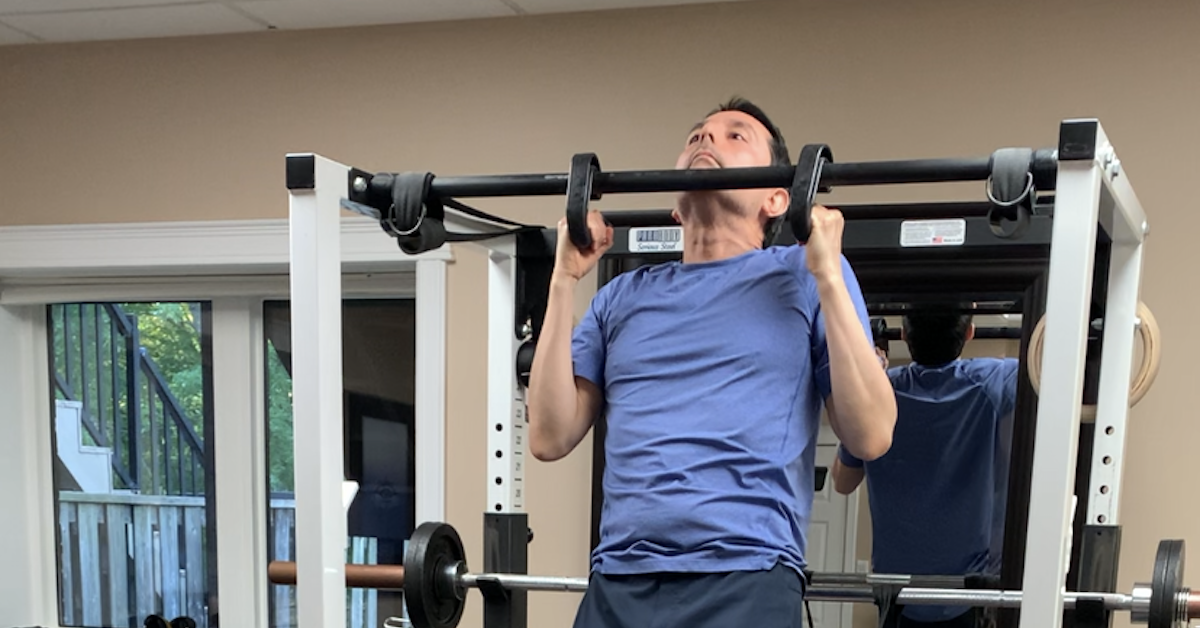Research provides valuable insights for health and fitness professionals. If you’re a personal trainer, here are some recent findings to help you stay ahead of the curve.
Recruit Fast-Twitch Muscle Fibers for Rehab and Performance
Lovering performed muscle biopsies of the rotator cuff and found the muscles to be comprised of approximately 55–60 percent FT [fast twitch] fibers. Furthermore, Irlenbusch performed muscle biopsies of the rotator cuff in patients with rotator cuff injuries and found that the FT fibers were most affected. Consequently, when trying to selectively activate FT fibers in rehabilitation or performance enhancement, the therapist needs to perform activities to recruit the FT muscle fibers. There are generally three ways to recruit FT fibers:
- Maximum intensity effort
- Electrical stimulation
- Fast movement patterns like plyometric exercises.
Note: High-rep protocols that develop type I and IIa muscle fibers are often used in injury rehabilitation, but most athletic injuries occur in type IIb fibers. Rehabilitation programs must target the right motor units for optimal recovery. You can learn more about this concept in my five-part article series, Heal Like Wolverine.
Muscle Atrophy Due to Chronic Disuse Rather than Aging
This study contradicts the common observation that muscle mass and strength decline as a function of aging alone. Instead, these declines may signal the effect of chronic disuse rather than muscle aging. Evaluation of masters athletes removes disuse as a confounding variable in the study of lower-extremity function and loss of lean muscle mass. This maintenance of muscle mass and strength may decrease or eliminate the falls, functional decline, and loss of independence that are commonly seen in aging adults.
Note: As I discuss in Injury Prevention Strategies for Aging Athletes, the principle is simple: Use your muscle or lose your muscle! I’ll be speaking on this subject for:
- The Ontario Society for Health and Fitness in Toronto on May 14
- Masters Swimming Canada in Etobicoke on May 22
Resistance Training to Improve Flexibility
While resistance training (RT) is recommended for older people for the development of muscular strength, some studies have indicated that regular participation in RT programs may also contribute to increased flexibility. In fact, there is evidence that regular RT serves as an active form of flexibility training and can improve range of motion to a similar extent as typical static stretching protocols. Regular performance of RT may improve flexibility by reducing passive tension and stiffness of the tissues surrounding a joint. Thus, from a time-saving standpoint, RT is a good way to develop both strength and flexibility as well as achieve improvements in body composition within a single session of training.
Note: Resistance training can enhance both active and passive flexibility, provided you maintain balance between agonist and antagonist muscles and train through a full range of motion. You can read more about this in my article Flexibility 101: The Do’s and Don’ts of Stretching.
Consume Creatine Post-Workout, Not Pre-Workout
Creatine supplementation plus resistance exercise increases fat-free mass and strength. Based on the magnitude inferences, it appears that consuming creatine immediately post-workout is superior to pre-workout vis-à-vis body composition and strength.
Antioxidant Supplements Before Training Interfere with Muscle Cell Adaptation
A popular belief is that reactive oxygen species (ROS) and reactive nitrogen species (RNS) produced during exercise by the mitochondria and other subcellular compartments ubiquitously cause skeletal muscle damage, fatigue, and impair recovery. However, the importance of ROS/RNS as signals in the cellular adaptation process to stress is now evident. In an effort to combat the perceived deleterious effects of ROS/RNS, it has become common practice for active individuals to ingest supplements with antioxidant properties, but interfering with ROS/RNS signaling in skeletal muscle during acute exercise may blunt favorable adaptation.
Note: A great way to neutralize free radicals produced during exercise is walking barefoot on grass immediately after training. This is a natural alternative to taking antioxidants before training, which may actually hinder muscle adaptation. Also, some people report cramping when using creatine—this is usually resolved with proper hydration and by taking creatine post-workout instead of pre-workout. I discuss both of these concepts in my book Mass Explosion.

From Zero to Two: Leo’s Chin-Up Breakthrough
When Leo began training with me in September 2024, our first goal was to improve body composition — lose fat,

Resistance Training Foundations: How to Progress Safely and Build Real Strength
Resistance training isn’t just for bodybuilders. Whether you’re just starting out, returning after a break, or training for performance, knowing

Neck Extensions Before Arm Curls: Unlock More Strength
When most people warm up for arm curls, they’ll hit a few light sets or maybe stretch out a bit.
follow
Error: No feed with the ID 2 found.
Please go to the Instagram Feed settings page to create a feed.
